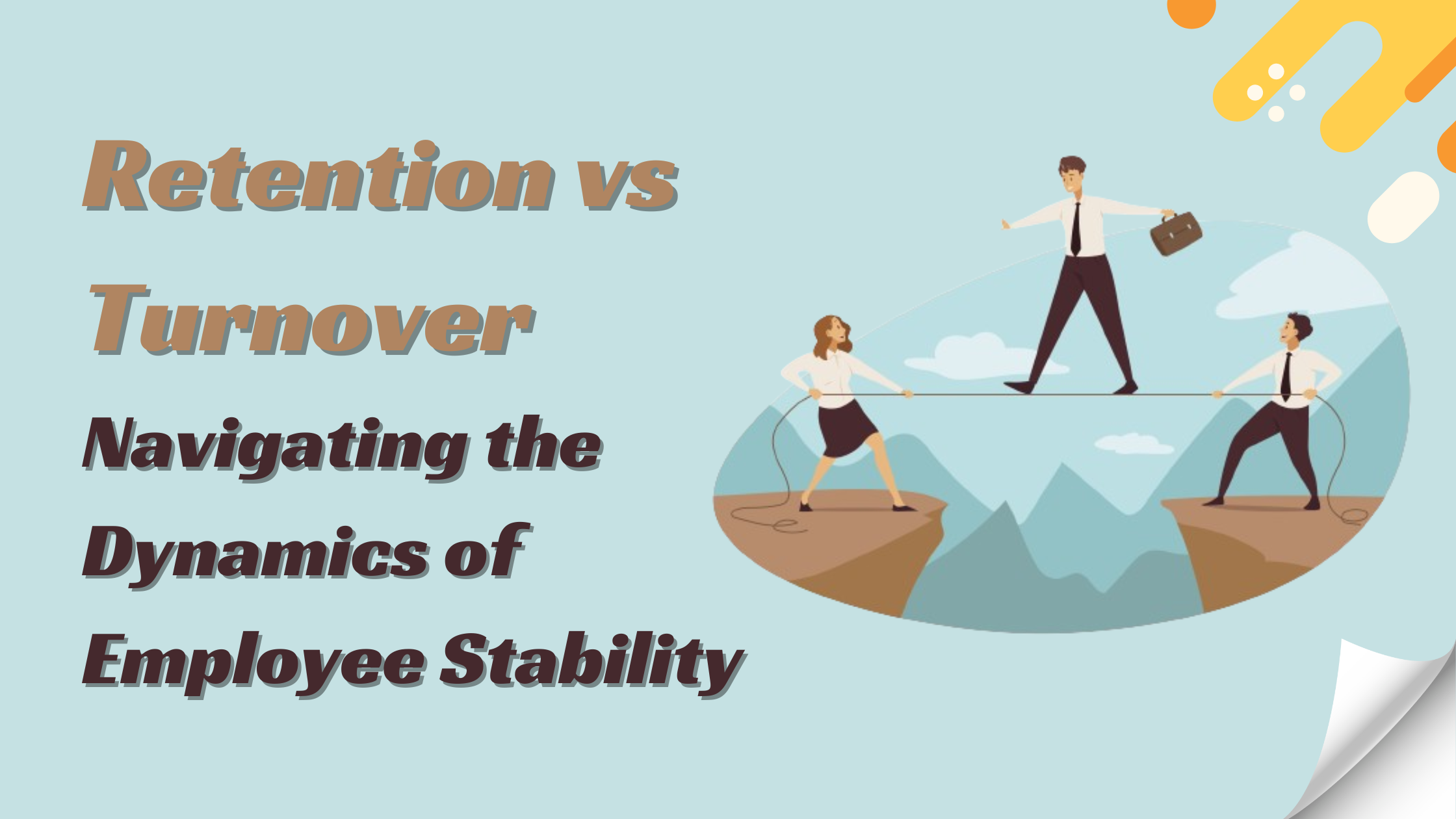Retention vs Turnover: Navigating the Dynamics of Employee Stability
- 1 Understanding Retention vs Turnover
- 1.1 Retention:
- 1.2 Turnover:
- 2 The Impact of Retention and Turnover on Organizational Success
- 2.1 Employee Engagement and Productivity:
- 2.2 Costs and Resource Allocation:
- 2.3 Talent Acquisition and Employer Brand:
- 2.4 Organizational Culture and Employee Morale:
- 3 Strategies for Optimizing Retention and Minimizing Turnover
- 3.1 Invest in Employee Development:
- 3.2 Promote Work-Life Balance:
- 3.3 Foster a Positive Work Environment:
- 3.4 Provide Competitive Compensation and Benefits:
- 3.5 Monitor and Address Turnover Drivers:
- 4 Conclusion
In human resources and talent management, the concepts of retention and turnover are fundamental to understanding and managing the stability of the workforce. Retention refers to an organization’s ability to retain its employees over a specified period, while turnover represents the rate at which employees leave the organization. In this comprehensive guide, we’ll explore the dynamics of retention vs turnover, examine their impact on organizational success, and discuss strategies for optimizing employee stability.
Understanding Retention vs Turnover
Retention:
Retention is an organization’s ability to retain its employees over time. It measures the percentage of employees who stay with the organization for a specified period, typically calculated annually. High retention rates indicate a stable and engaged workforce, essential for maintaining productivity, continuity, and organizational culture.
Turnover:
Turnover refers to the rate employees leave the organization voluntarily (voluntary turnover) or involuntarily (involuntary turnover). It is calculated as a percentage by dividing the number of employees who leave by the average total number of employees during the same period. High turnover rates can signal underlying issues such as dissatisfaction, poor leadership, or inadequate career development opportunities.
The Impact of Retention and Turnover on Organizational Success
Employee Engagement and Productivity:
High retention rates are correlated with higher levels of employee engagement and productivity. Engaged employees are more committed to their work, perform better, and contribute positively to organizational goals. Conversely, high turnover rates can disrupt workflow, decrease morale, and hinder productivity, leading to decreased organizational performance.
Costs and Resource Allocation:
Turnover is costly for organizations regarding direct expenses (e.g., recruitment, training, and onboarding costs) and indirect costs (e.g., lost productivity, decreased morale). High turnover rates can strain resources, impact profitability, and impede growth. In contrast, investing in retention initiatives, such as career development programs and employee recognition efforts, can yield significant cost savings and enhance organizational stability.
Talent Acquisition and Employer Brand:
Retention and turnover directly impact an organization’s ability to attract and retain top talent. A positive employer brand, characterized by high retention rates, fosters a reputation as an employer of choice, attracting qualified candidates and reducing recruitment costs. Conversely, high turnover rates can tarnish the employer brand, making attracting and retaining talent challenging, particularly in competitive industries.
Organizational Culture and Employee Morale:
Retention and turnover also influence organizational culture and employee morale. High retention rates promote employee stability, trust, and loyalty, fostering a positive work environment and strong team dynamics. In contrast, frequent turnover can erode trust, disrupt team cohesion, and contribute to a culture of uncertainty and disengagement.
Strategies for Optimizing Retention and Minimizing Turnover
Invest in Employee Development:
Provide career growth and advancement opportunities through training, mentorship, and skills development initiatives. Empower employees to expand their skills, pursue their passions, and progress within the organization.
Promote Work-Life Balance:
Support employee well-being by offering flexible work arrangements, wellness programs, and initiatives that promote work-life balance. Recognize the importance of employee health and happiness in fostering retention and reducing turnover.
Foster a Positive Work Environment:
Cultivate an inclusivity, respect, and appreciation culture where employees feel valued, supported, and empowered. Encourage open communication, celebrate successes, and address concerns promptly to foster a sense of belonging and engagement.
Provide Competitive Compensation and Benefits:
Offer competitive compensation packages, including salaries, bonuses, and benefits, to attract and retain top talent. Regularly review and adjust compensation structures to remain competitive in the market and reward employees for their contributions.
Monitor and Address Turnover Drivers:
Identify the root causes of turnover through exit interviews, surveys, and feedback mechanisms. Address common turnover drivers, such as a lack of career advancement opportunities, poor management, or dissatisfaction with work conditions, to mitigate turnover and improve retention.
Conclusion
Retention and turnover are two sides of the same coin, representing the stability and dynamics of the workforce within an organization. While high retention rates contribute to organizational success by fostering employee engagement, productivity, and loyalty, high turnover rates can harm morale, productivity, and profitability. By understanding the dynamics of retention vs turnover (https://www.axterior.com/post/retention-vs-turnover-all-differences-you-should-know ) and implementing strategies to optimize retention and minimize turnover, organizations can cultivate a stable, engaged, and high-performing workforce that drives sustainable growth and success.


















